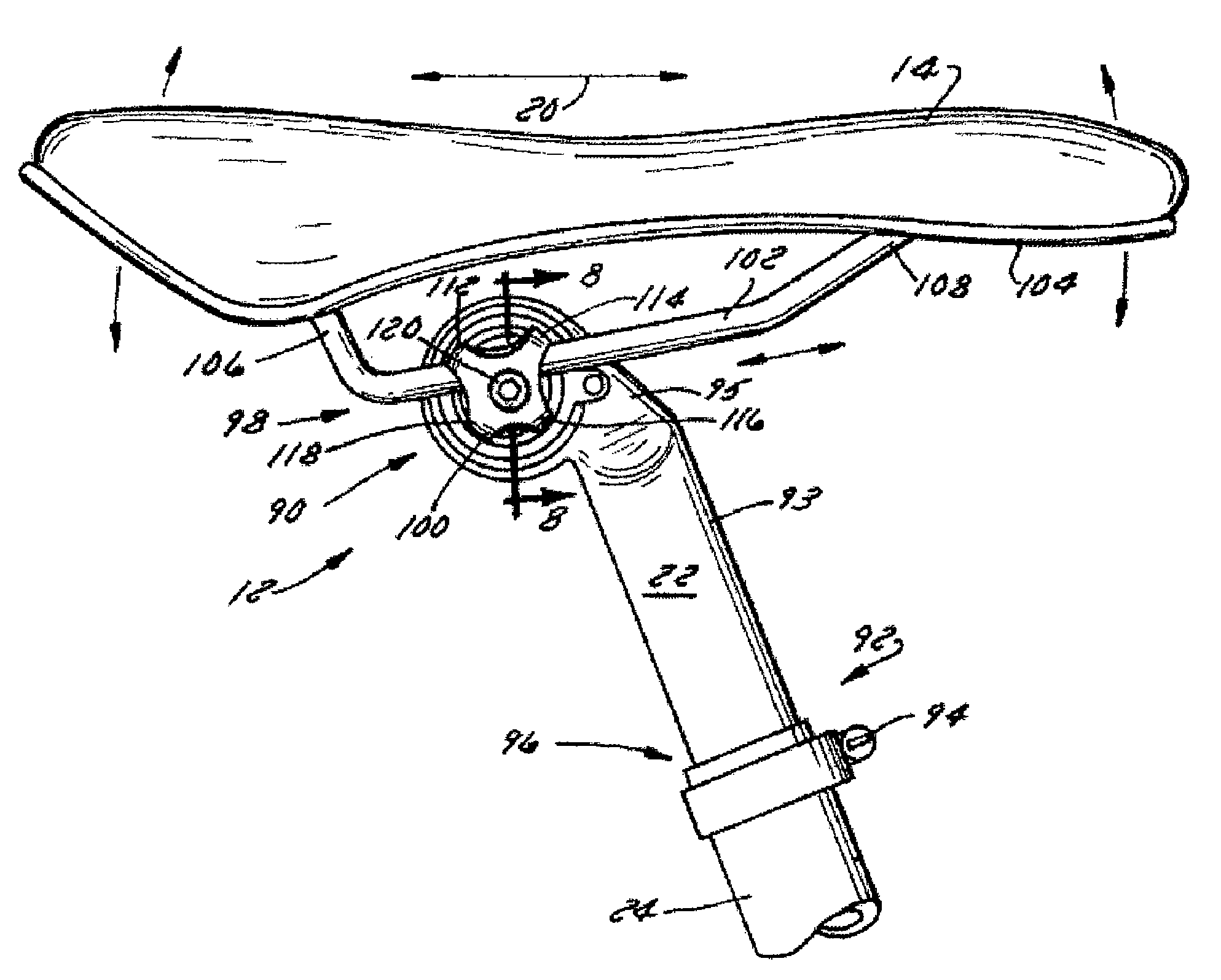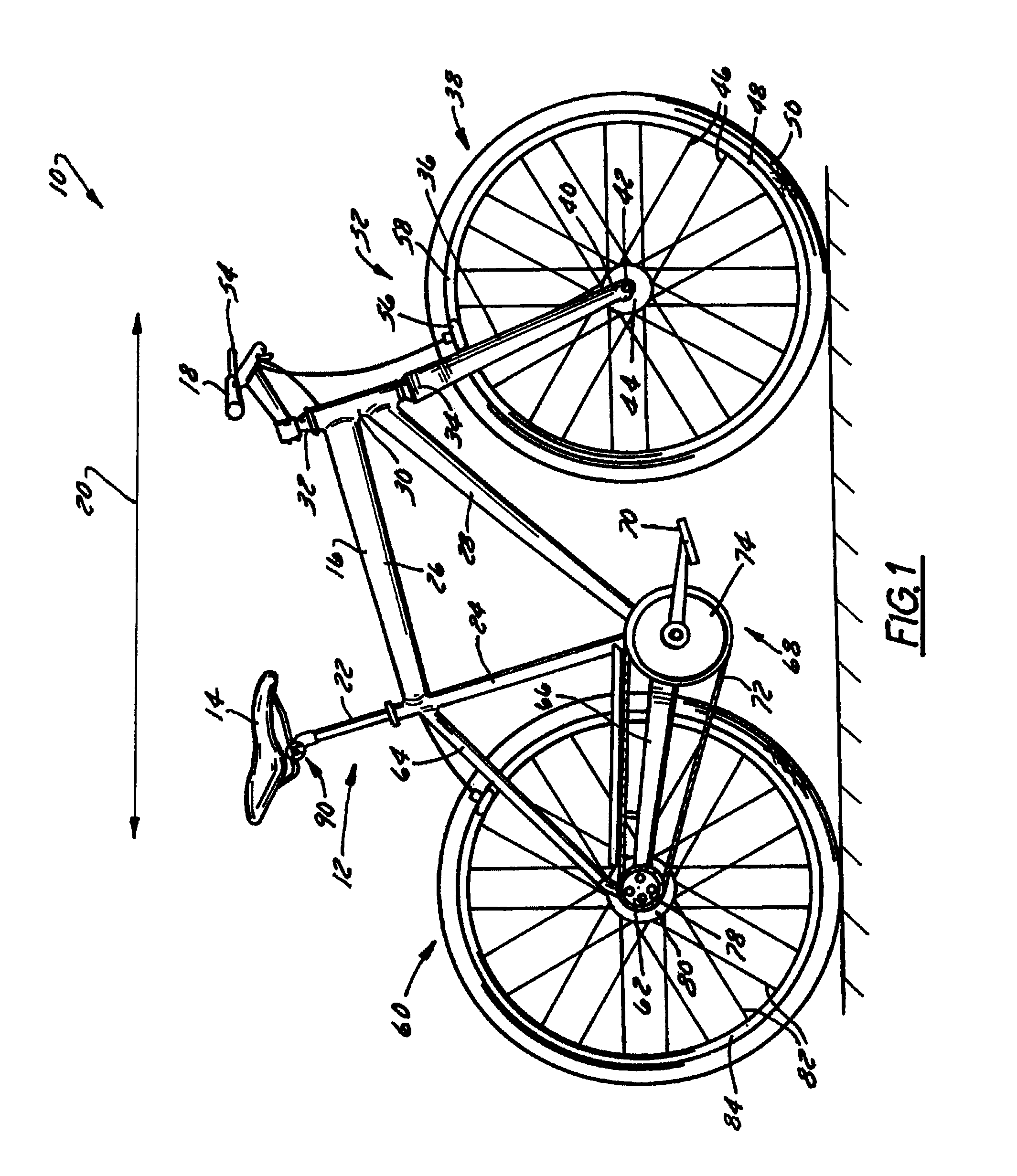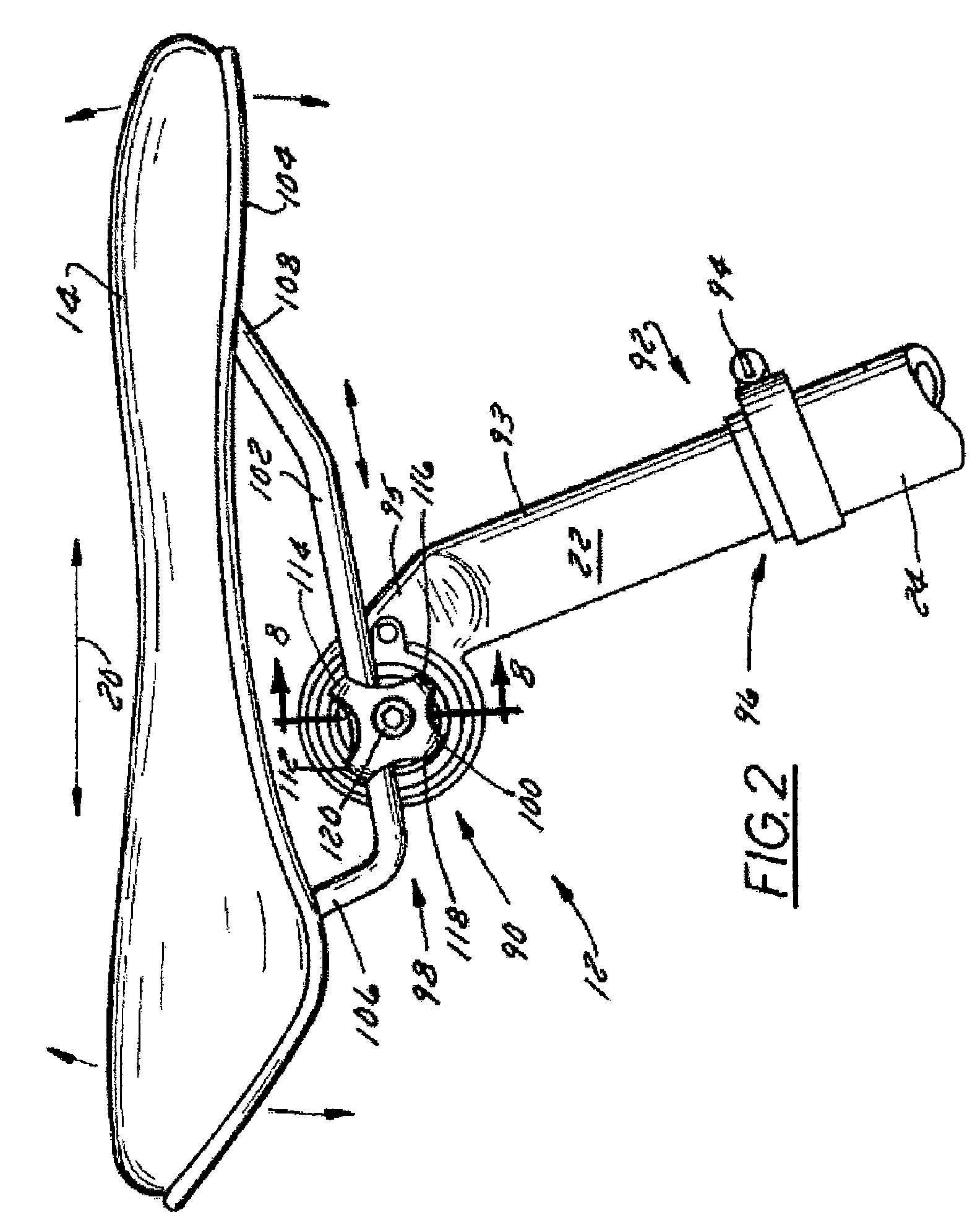Suspension bicycle seat post
a bicycle seat post and handlebar technology, applied in the field of bicycles, can solve the problems of dampening the energy communicated to the frame of the bicycle, providing with fairly aggressive and complex shock or linkage systems, and outweighing perceived advantages, so as to achieve the effect of dampening movemen
- Summary
- Abstract
- Description
- Claims
- Application Information
AI Technical Summary
Benefits of technology
Problems solved by technology
Method used
Image
Examples
Embodiment Construction
[0024]FIG. 1 shows a bicycle 10 having a seat post assembly 12 that is constructed according to the present invention. Seat post assembly 12 attaches a seat 14 to a frame 16 of bicycle 10. Handlebars 18 are attached to frame 16 generally forward of seat 14 with respect to a longitudinal axis, indicated by arrow 20, of bicycle 10. Seat post assembly 12 includes a seat post 22 that slidably or telescopically engages a seat tube 24 of frame 16. Frame 16 includes a top tube 26 and a down tube 28 that extend forwardly from seat tube 24 to a head tube 30 that connects the generally forward ends of top tube and down tube 26, 28.
[0025]Handlebars 18 are connected to a stem 32 that passes through head tube 30 and engages a fork crown 34. A pair of forks 36 extend from generally opposite ends of fork crown 34 and are constructed to support a front wheel assembly 38 at an end thereof or fork tip 40. Fork tips 40 engage generally opposite sides of an axle 42 that is constructed to engage a hub 4...
PUM
 Login to View More
Login to View More Abstract
Description
Claims
Application Information
 Login to View More
Login to View More - R&D
- Intellectual Property
- Life Sciences
- Materials
- Tech Scout
- Unparalleled Data Quality
- Higher Quality Content
- 60% Fewer Hallucinations
Browse by: Latest US Patents, China's latest patents, Technical Efficacy Thesaurus, Application Domain, Technology Topic, Popular Technical Reports.
© 2025 PatSnap. All rights reserved.Legal|Privacy policy|Modern Slavery Act Transparency Statement|Sitemap|About US| Contact US: help@patsnap.com



